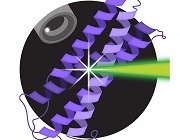Experimental interrogation of phase-separated condensates in cells
At the Lerner lab, we use existing and develop new advanced fluorescence tools/methods to study the mesoscopic and nanoscopic material properties, contents, interactions, and functionality of membraneless phase-separated condensates in biologically relevant cell systems.
Currently, we do so for
- Heterochromatin bodies in mouse embryonic stem cells to study their changes through stages in stem cell differentiation (in collaboration with Prof. Eran Meshorer): how do their properties serve their function at different stages of stem cell differentiation?
- Alpha-Synuclein clusters in Neuron and Neuron-like cells: how excess alpha-synuclein accumulates in clusters, and is maintained in a sequestered state without undergoing toxic oligomerization or amyloid-like fibrillization?
New methods/tools developed within this project:
- Fluorescence lifetimes of fluorescent protein tags (mCherry and its variants) that indicate microenvironmental properties (e.g., density and density heterogeneities) inside condensates (Joron et al. & Haas-Neill et al.)
- New in-cell single-molecule fluorescence methods (to be published soon)

